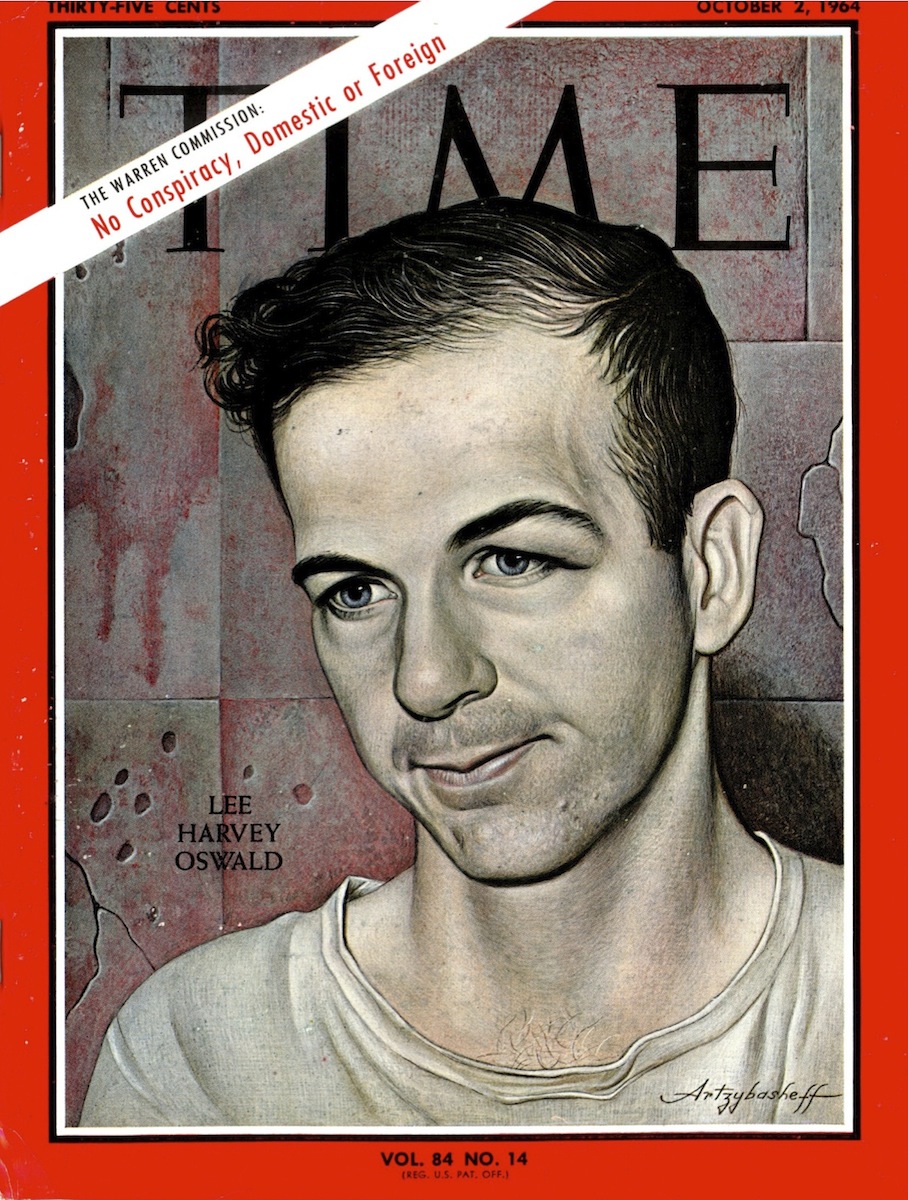
Only a week had passed since President John F. Kennedy’s assassination when his successor in the White House, Lyndon B. Johnson, appointed the Warren Commission to investigate the crime. The nation and its government wanted answers about what had happened, and the Commission was given the task of finding them, releasing their report 50 years ago Wednesday on Sept. 24, 1964.
In the form in which it was delivered to Johnson, the Warren Commission Report was 888 pages long, including photos and diagrams and, by TIME’s count, 706 pages of text.
For the reporters and writers at TIME, that length meant that efficiency was of the essence to publish a response ahead of the magazine’s weekly deadline. As recounted in the publisher’s note from the Oct. 2, 1964, issue, the staff was given a small head start:
While printing presses ran day and night to reprint the full document in various editions, our job was different: we went to work to excerpt the report, cull its most significant detail, and summarize its meaning in a special nine-page section.
The task began on Friday morning, 54 hours before the report’s official release and less than 36 hours before this issue was to go to press. In the Indian Treaty Room of Washington’s old Executive Office Building, advance copies were being handed out to the press from three pushcarts. Near the head of the line that had formed was John Brown, a messenger working for TIME’S Washington Bureau. He placed ten copies in a suitcase and headed for the airport. Less than two hours later, copies were turned over to a team assigned to prepare the special section—Nation Editor Champ Clark, Writers Marshall Loeb and William Johnson, Researchers Harriet Heck and Pat Gordon. They closed their doors and started reading the nearly 300,000 words.
About seven hours later, they were ready for a dinner conference with TIME’S managing editor. The entire section was written, edited, checked and in type not long after our usual press time on Saturday night.
“We worked through the night and into a second night,” recalls Marshall Loeb, now 85. “The mood was one of determination to get the story done.”
In addition to recounting the events that surrounded the assassination, the Commission’s report debunked the major conspiracy theories that had emerged in the year after that day. Lee Harvey Oswald acted alone. He and Jack Ruby had no connection. There was no foreign conspiracy, nor was there a domestic one.
But what the report lacked in scandal it made up for in detail. “Its great value comes from the thoroughness with which the Commission carried out its investigation, from its laying to rest many malignant rumors and speculations, and from its fascinating wealth of detail by which future historians can abide,” noted TIME’s story on the report.
Among those details were many that Loeb and his colleagues decided were worth highlighting for TIME’s readers. There was the clear plastic bubble that could have covered the convertible in which the President was driving, had it not been such a nice day. The fact that the plastic wasn’t actually bulletproof in the first place. The “chilling re-enactment of the assassination” that the Commission staged in order to make sure the car would have been visible from the Book Depository window. The list of characteristics of Oswald’s home life: an unusual attachment to his mother, delusions of grandeur, insistence that his wife could not smoke or drink or wear make-up. The Secret Service agents who were out drinking the night before. The failure to secure the buildings along the motorcade route.
“The Warren Commission Report piece was to be the definitive piece for TIME on the Kennedy assassination,” Loeb says, and everyone working on it knew so.
After the special issue was published, Loeb, who had first joined TIME in 1956, would end up spending 30 more years at Time Inc., retiring in 1994 from his job as managing editor of Fortune magazine. Following his retirement, he became editor of the Columbia Journalism Review. So it’s only fitting that, when he looks back on the Warren Commission Report piece, it’s with an editor’s eye that he sees the way those 36 hours of work have stood the test of 50 years.
“I think it was a well-done job — one, to focus the material and, two, picking out which areas of the report to focus on. To this very day, if someone picks up the Warren Commission Report, which is like a big book, and picks up one of our stories about the report, it will look very good,” Loeb says. “There were no huge errors discovered afterward — I mean years afterward, when there was plenty of time to examine it.”
Read TIME’s special section on the Warren Commission Report, free of charge, here in the archives: The Warren Commission Report
Watch a video report on how LIFE acquired Abraham Zapruder’s film of the JFK assassination: How LIFE Brought the Zapruder Film to Light
More Must-Reads from TIME
- Why Biden Dropped Out
- Ukraine’s Plan to Survive Trump
- The Rise of a New Kind of Parenting Guru
- The Chaos and Commotion of the RNC in Photos
- Why We All Have a Stake in Twisters’ Success
- 8 Eating Habits That Actually Improve Your Sleep
- Welcome to the Noah Lyles Olympics
- Get Our Paris Olympics Newsletter in Your Inbox
Write to Lily Rothman at lily.rothman@time.com